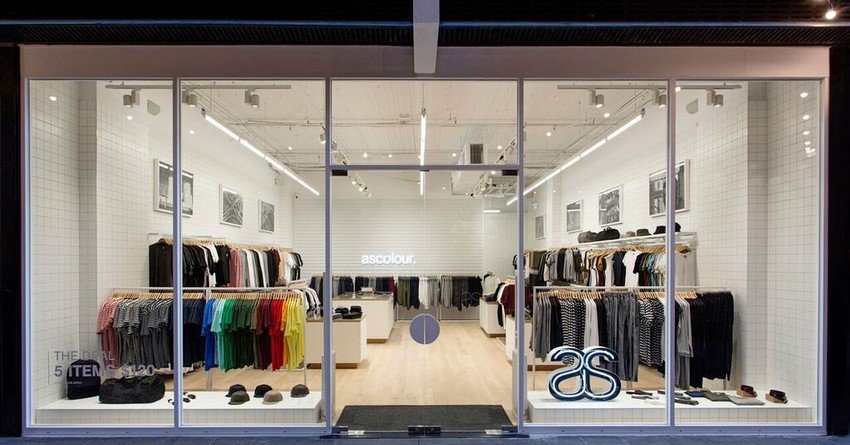
Designed by Auckland-based studio Think & Shift, the bright store contrasts well with the dark neighboring spaces.

Director James McNab was tasked with designing a store that stood out but also had a fresh take on AS Colour’s signature style and feel.
AS Colour’s Melbourne flagship store is based in the Queen Victoria Building in the heart of the city.
McNab says the whole operation went relativity smoothly, with the only hard part being distance and controlling aspects of the design from afar.
“We had contractors all over the show too; we had manufactures in Matamata doing the cabinets, guys in Auckland and Tauranga working the smaller components and project managers in Melbourne running the onsite show, all the while, we were based in Auckland.”

The new Melbourne store is set apart by its lightness compared to the dark spaces that surround it, McNab says the company’s ‘quality basics’ concept was a focus for the design.
“We knew we didn’t want to go too loud with our colours or distract from the bright clothing, so we focused on textures and minimising materials.”
“We broke our material direction down to timber and white, and our textures to mattes and ‘basic’ three-dimensional geometries,” says McNab. “With all the above components combined, I feel we set a subtle but quality extension for the brand.”
The work took about six months to complete, with design starting in September with the completion of the store this past March.

McNab says the new store caters to Melbourne consumers. The city has seen growth on average by 1800 people a week, and is on track to overtake Sydney as the nation’s biggest metropolis within 20 years.
“With Melbourne being a city known for culture and art, I think ‘Melbournites’ have an appreciation for quality when they see it. To stand out and compete against the rest, we needed to up the ante.”
At 4.4 million today, Melbourne is tipped to reach six million by 2031, seven million by 2041 and eight million by 2051, according to official state projections.




